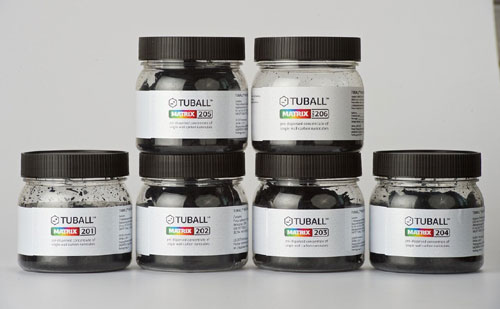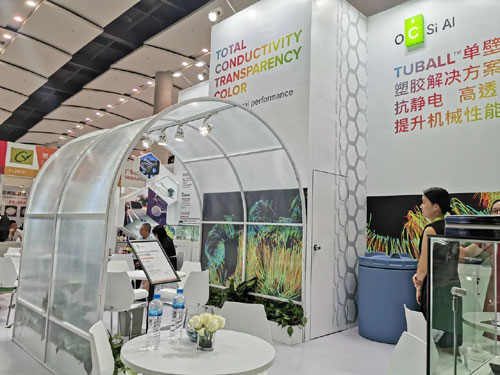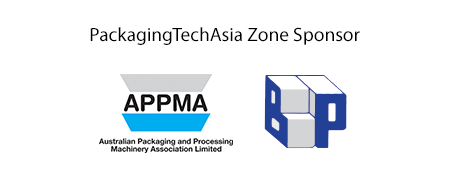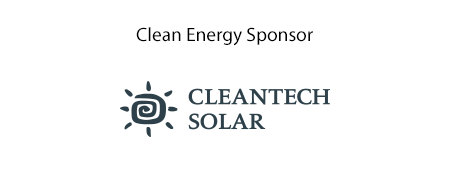ลงทะเบียนเข้าชมงาน
ข่าวสารและข่าวในแวดวงอุตสาหกรรม
Conductive transparent packaging made possible with TUBALL graphene nanotubes


Graphene nanotubes have an expanding application in various thermoplastic compounds, including polyethylene, polypropylene, ABS plastics, PVC, polyamide and polycarbonate. At dosages of 0.002% — 0.1% of the total weight, nanotubes provide permanent uniform conductive properties, while allowing you to retain the color or transparency of the final product and without impairing mechanical performance. Visit OCSiAl booth #EL10 (Hall 106) at ProPak Asia 2019 in Bangkok on June 12—15, 2019, to discover the benefits that TUBALL nanotubes can bring to your products!
https://yadi.sk/i/lqw1eutaZMiQFA
Conductivity in thermoplastics is usually associated with a black color that results from high loadings of conductive carbon black added to the material. Moreover, high levels of carbon black also inevitably result in degradation of the polymer’s mechanical properties. The only way to achieve conductivity without all the disadvantages of carbon black is to use graphene nanotubes, also known as single wall carbon nanotubes (SWCNTs). They can be thought of as extremely thin, rolled-up sheets of graphene.
https://yadi.sk/i/FI84XsJslJ4CJA
OCSiAl is currently the only industrial-scale manufacturer of low-cost graphene nanotubes — it holds 90% of the world’s total production capacity of SWCNTs. OCSiAl produces high-purity nanotubes under the brand name TUBALL™. The flexibility of TUBALL™ nanotubes and the extremely high ratio between their length and mean outer diameter — around 5,000:1 — result in an extremely low percolation threshold. Ultra-low dosages of nanotubes in thermoplastics are enough to form a 3D conductive network that is permanent, stable and humidity-independent.
The ultra-low effective loadings that are required allow bright colours, including white, to be achieved in the final compound and does not impair the material’s mechanical properties, in some cases improving them.
The recently developed TUBALL™ MATRIX concentrates greatly simplify the handling of nanotubes without changes in the original formulation or production processand facilitate standard clean manufacturing processes without the powder or dust associated with using carbon black.
https://yadi.sk/i/pq3nlLev_Hch3w
OCSiAl and its partners have already achieved a number of successes in applying graphene nanotubes in key thermoplastic compounds, such as polyethylene, polypropylene, ABS plastics, PVC, polyamide and polycarbonate. Here are just a few examples of high-performance packaging products made possible with TUBALL graphene nanotubes.
TUBALL™in polyethylene films
https://yadi.sk/i/-hkkzawtV08aYg
One of the largest Chinese manufacturers of PE films is planning to produce anti-dust polyethylene films with graphene nanotubes for greenhouse applications. Even an ultra-low concentration of 0.002% of TUBALLTM nanotubes is enough to achieve resistivity of 10^9 Ω/sqthat protects films from formation of dust on the surface. One of the key parameters for anti-static PE films in greenhouse applications is light transmittance. Films incorporating carbon nanotubes achieve light transmittance of more than 91% compared with untreated film, a value that is not achievable with any other anti-static additive.
A no-less important factor for the PE film manufacturer was its capability to use a standard manufacturing process without any changes in formulation or equipment, even with the adoption of nanotechnologies. Beijing Jutianjiao Polymer produces TUBALL™BF-01 concentrate based on OCSiAl’s TUBALLTM nanotubes. Application of TUBALL™BF-01 concentrate has enabled PE film producers to maintain a standard clean manufacturing process without the powder or dust associated with using other anti-static additives such as carbon black.
TUBALL™ in anti-static packaging produced by rotational moulding
https://yadi.sk/i/3vWkdntL7eCZEA
An OCSiAl client required colored polyethylene packaging for flammable and explosive liquids and powders. A permanent, stable surface resistivity in the range 10^6—10^9 Ω/sq was needed. The client was advised to apply TUBALL™ MATRIX 801 nanotube concentrate.0.07 wt.% of TUBALL™ was enough to obtain a permanent, stable surface resistivity of 10^7 Ω/sq in colored tanks, while 0.1 wt.% of TUBALL™ achieved a surface resistivity of 10^6 Ω/sq in black tanks. Mechanical strength was maintained or even increased. No less important was the fact that working with TUBALL™ nanotubes is a standard clean manufacturing process without the dust associated with carbon black.
TUBALL™in PVC plastisol
https://yadi.sk/d/cbYd8eyvA3m7NA
Graphene nanotubes’ unique properties help them to leverage PVC plastisol performance, to fully satisfy market demand for 10^5 — 10^9 Ω/sq resistivity, to preserve a permanent, stable effect even in harsh working conditions, to maintain abrasion resistance, and in particular to allow flexibility in the coloring of final products. This is all possible with just 0.25—2 wt.% of single wall carbon nanotube concentrate, recently developed by OCSiAl specifically for PVC plastisol application.
New technology is able to eliminate the common drawbacks seen in the use of conventional anti-static additives, such as carbon black or ammonium compounds. Application of carbon black usually has a significant negative impact on PVC plastisol’s mechanical performance and turns final products black, whereas ammonium compounds can become unstable over time and provide only humidity-dependent resistivity.
You can experience at first hand all these graphene nanotube-empowered products at OCSiAl booth #EL10 (Hall 106) at ProPak Asia 2019 in Bangkok on June 12—15, 2019. Come and find out how TUBALLTM nanotubes can help your product to gain a competitive edge and significantly increase its performance!
If you didn't plan to attend ProPak Asia 2019, contact us at [email protected]or +60 10 225 1203.





























































